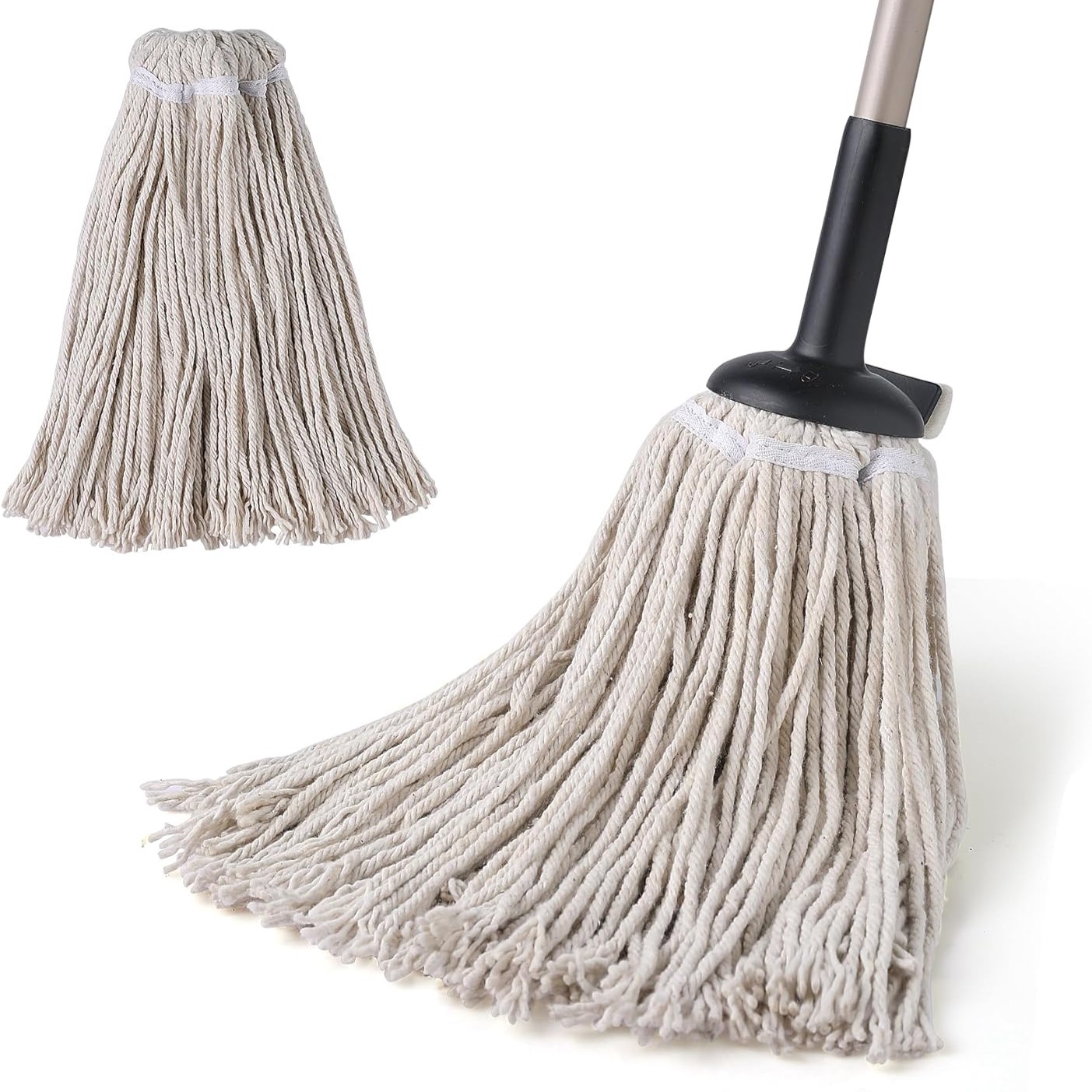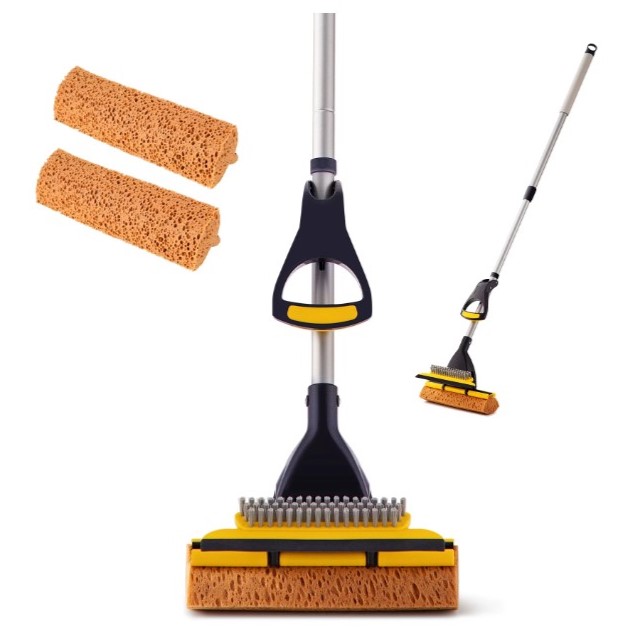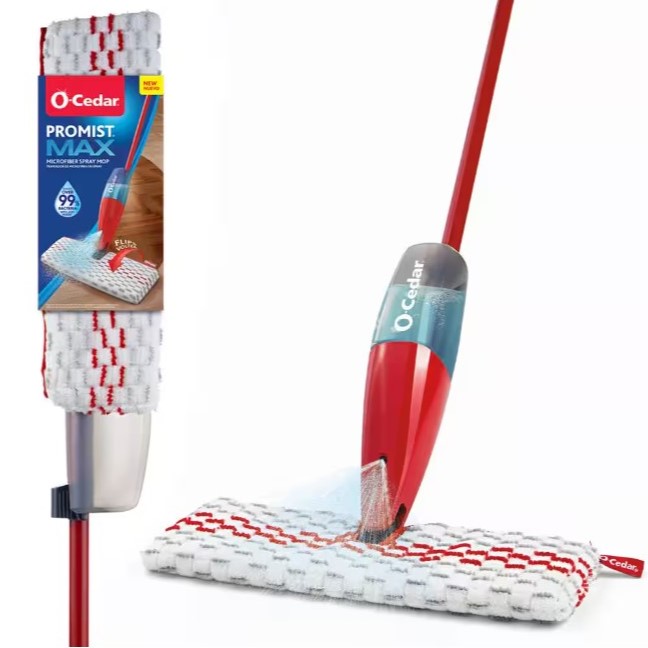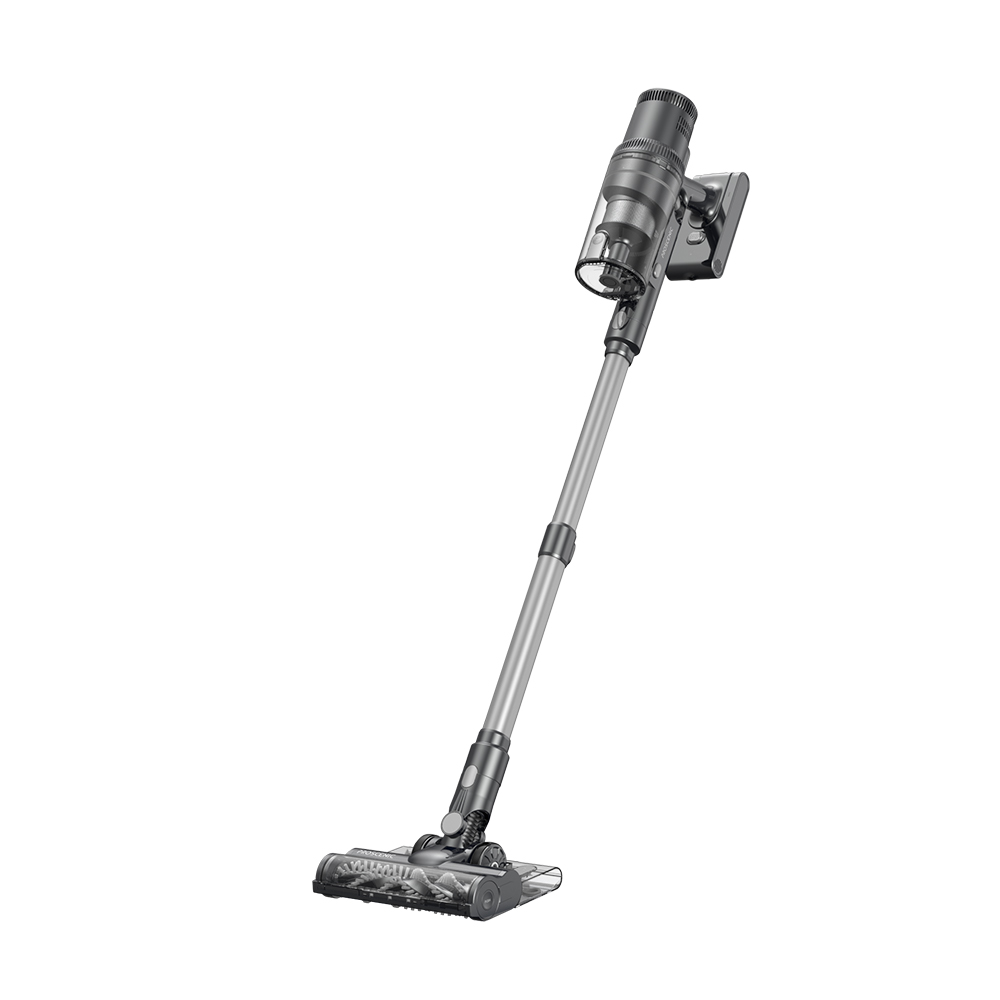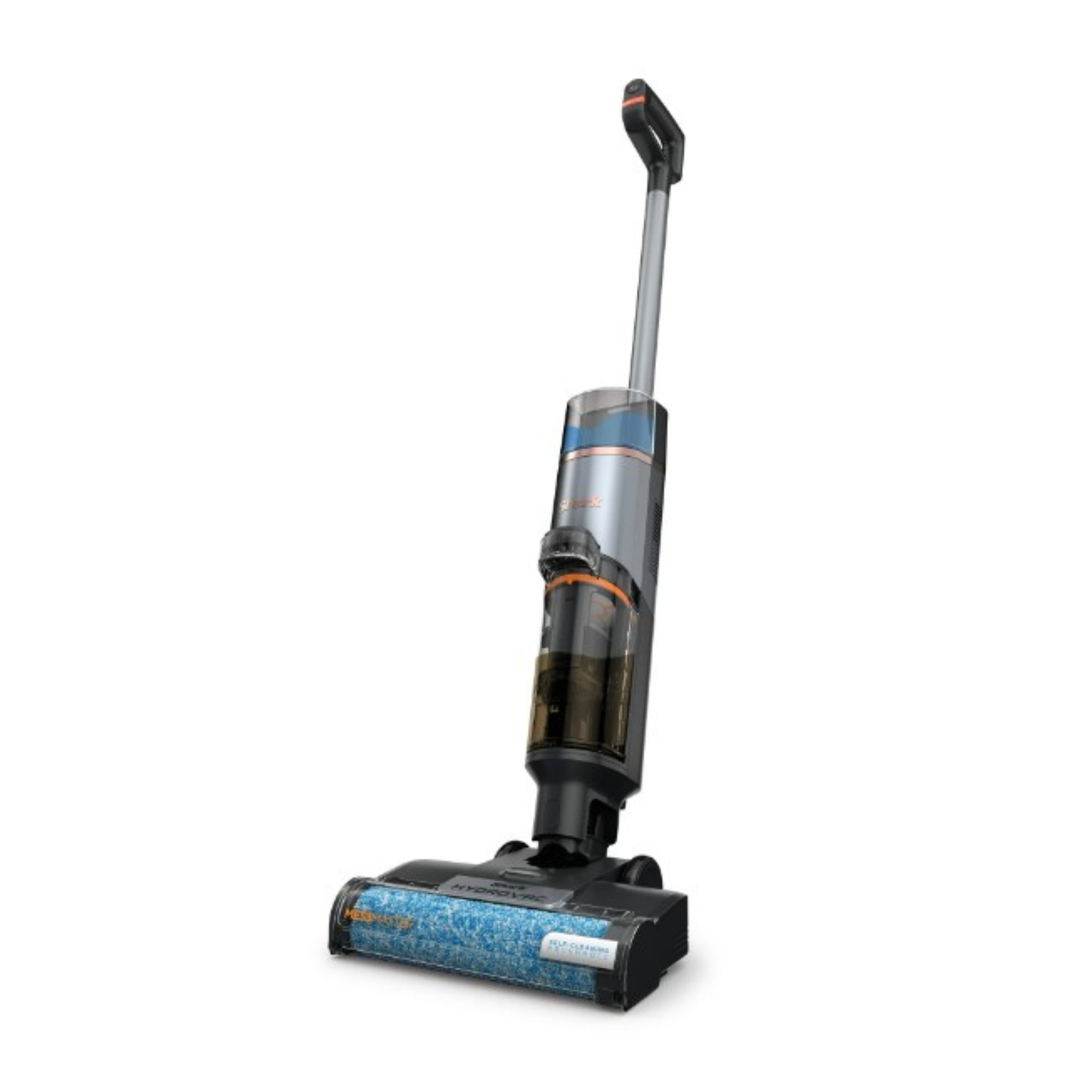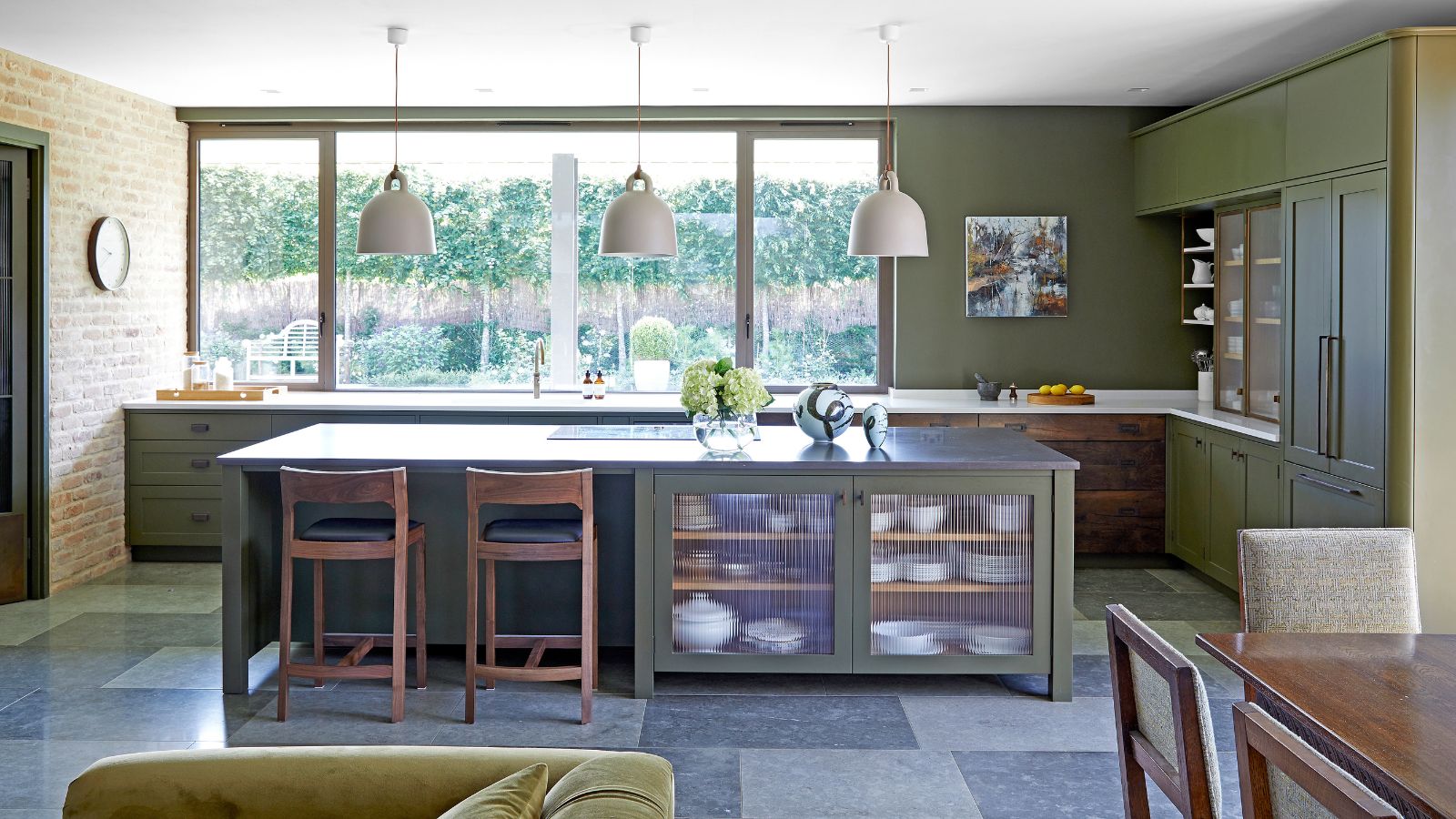
Mopping isn't the most popular chore out there, but it's an essential one nonetheless. Our floors are among the dirtiest places in the whole house as we bring dirt in from the outside and walk it around.
The best vacuums for hard floors can only do so much, and it's recommended to mop hard floors at least once a week. Anybody that's tackled it before will know the struggles of leaving streaks behind, or not quite getting every bit of dirt and grime from the floors.
So, we've spoken with the cleaning experts and collated this essential guide to mopping floors the right way.
How to mop floors the right way
Before getting into the mopping methods that will leave your floors looking perfect, it's important to get into the floors we're cleaning and the mops we're using.
1. Floor types
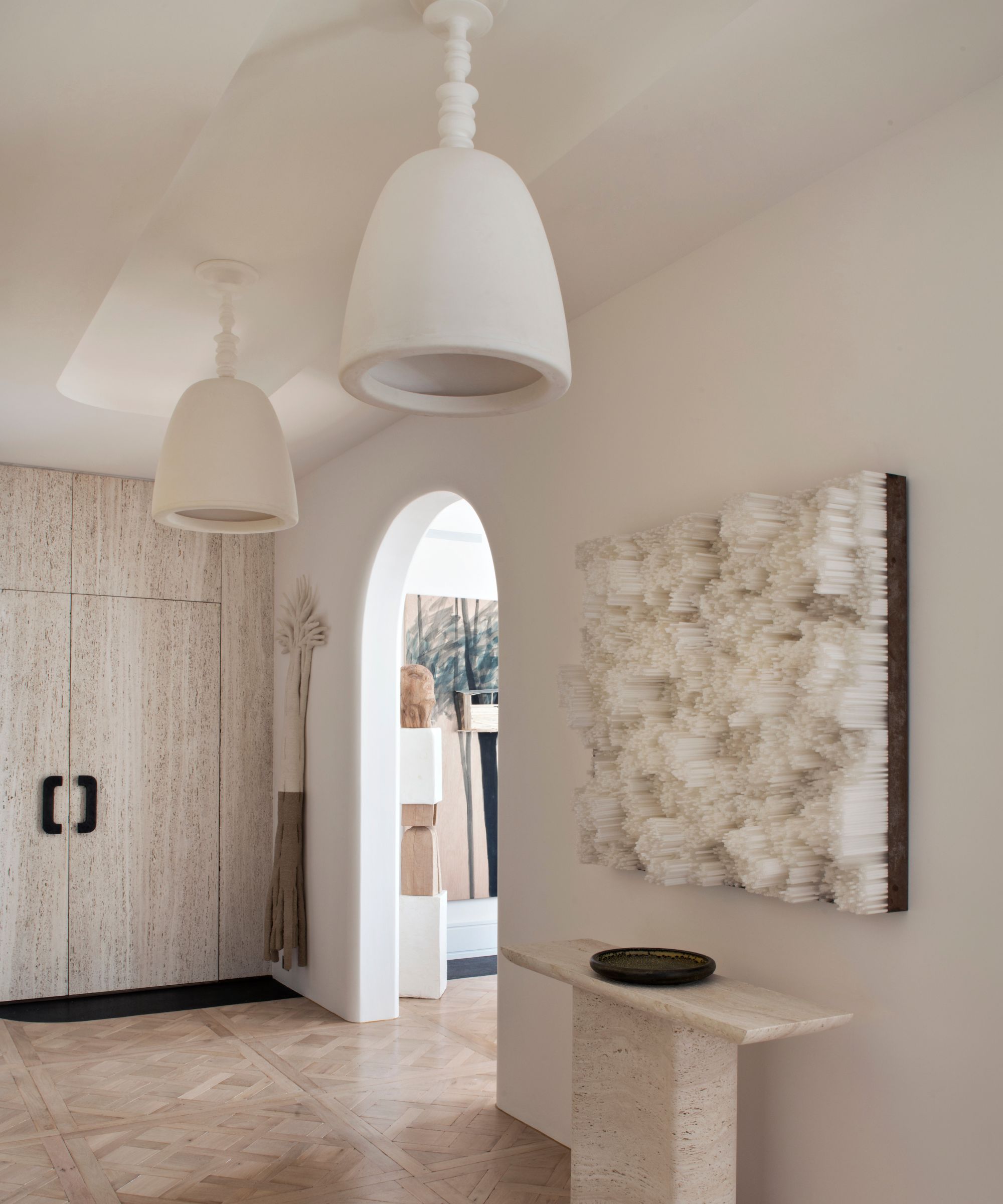
First off, bear in mind that not all floor types should be mopped the same way. The 'right way' really depends on the surface you're mopping, as Paul Hambridge, MD of Factory Direct Flooring, emhpasizes.
'If you're planning on taking a mop to a laminate or real wood floor, it's absolutely essential that the mop head has been wrung out thoroughly. That's because both of these floor types can absorb water, causing them to swell and warp,' says Paul.
'Vinyl floors are not as prone to water damage as other floor types (like real wood), but too much water could cause problems, so it's still best to use it sparingly,' he adds. This is because an overly wet mop can work its way into the vinyl's seams and loosen the adhesive, causing bumps or curling.
Design expertise in your inbox – from inspiring decorating ideas and beautiful celebrity homes to practical gardening advice and shopping round-ups.
The same goes for hardwood floors. Wood is naturally porous so can absorb moisture easily, so you'll need to wring out as much water as possible before mopping. Cold or room-temp water is best, and remember to dry the floor thoroughly straight after.
2. Choose the right mop
It's also important to pick the right mop for the job. Elizabeth Shields, operations manager at Super Cleaning Services, explains the differences.
'Classic cotton mops are made from absorbent cotton fibers, making them perfect for all-purpose cleaning on a wide range of floors. Use it for wet spills or dry messes on hardwood, linoleum, and tile floors,' says Elizabeth. Cotton mops are pretty inexpensive and can last a long time, like the Eyliden String Mop from Amazon that has two replaceable heads.
'Sponge mops work on smooth, sealed floors like vinyl or laminate. It can easily soak up spills and liquid messes, making it easier for you to control the amount of moisture applied to the floor,' she explains. This makes it an ideal choice for floor types that can't handle too much moisture. And, as they're easy to maneuver, they're great for busy areas like kitchens and bathrooms. The Eyliden Sponge Mop at Walmart is a perfect example.
There are also microfiber mops that, because of their fibrous, net-like surface area, are a common favorite for home mopping. They absorb moisture particularly well, and the micro fibers are able to get into small cracks and grooves within the floor.
'Microfibre mops are the most versatile option, as they can be used on most floor types, such as hardwood, tile and laminate,' explains Tommy Singh, senior product developor at Beldray. You can even get microfiber mops with its own built-in spray, like the O-Cedar ProMist Microfiber Mop at Home Depot. This is a 'quick clean-up solution [that] allows you to efficiently sanitise your floors,' Tommy adds.
3. Sweep/vacuum floor
This part's essential so that you're not smearing dirt across your hard floors, and it also helps if you avoid these habits making your floors dirtier. Clear all debris from the floor by vacuuming or sweeping thoroughly.
'Vacuuming prior to mopping will remove dirt, dust and hair, making the task of mopping easier, and lower the chances of spreading bacteria and allergens around the home,' says Tommy Singh.

4. Mop, efficiently
Rather than grabbing your mop and going left to right, there are tried-and-tested methods to clean your floors thoroughly and efficiently.
Don't over-wet
As mentioned before, many hard floors can be sensitive to an excess of moisture, causing warping, swelling, cracking or discoloration. As Elizabeth puts it: 'Excess moisture can seep into cracks and seams, so don’t soak it in water, just dampen it a bit.
Start from the edges
'With a wrung-out mop, start at the edges of your room and move towards the centre in a figure-of-eight,' Paul recommends. A figure-of-eight, or going back-and-forth in overlapping strokes, will spread your cleaning solution evenly.
Elizabeth confirms this further: 'You’ll avoid going over the same areas twice, which can be a pain and take up more time. And if you have a consistent cleaning pattern, you don’t miss any spots.'
Work in sections
'Focusing on one area at a time will keep the cleaning solution from drying out too quickly, leading to streaks and uneven cleans,' advises Elizabeth.
Change water regularly
'When the whole mop head is dirty, that's when you should rinse it thoroughly in clean water before going over the floor again, otherwise it could spread dirt around,' Paul recommends. The water can quickly get dirty when mopping, so you could even change the water more regularly than that.
Avoid streaks
To create a consistent finish, Tommy recommends 'using less cleaning solution, as higher quantities can cause streaks.'
Paul mentions that mopping with white vinegar can avoid streaks, as it never leaves marks and produces a gleaming finish. It's worth noting here that white vinegar can damage certain floor types, like wood, so use caution and double check before doing so.
5. Dry
'After mopping your floor, dry it off to prevent water damage and avoid any slips or falls. Grab a dry mop or a towel and use it to soak up any excess moisture,' Elizabeth recommends. This is a key step for floor types that are more sensitive to moisture, and will improve their longevity if you do this every time.
Mopping hard floors might be a bit easier following Dyson's announcement of their new WashG1. You could also take some work off your hands with one of the best robot vacuums and the many options that double up as robot mops.
Or, to really make things easier at home, consider one of the many vacuum/mop combos that you can find these days:
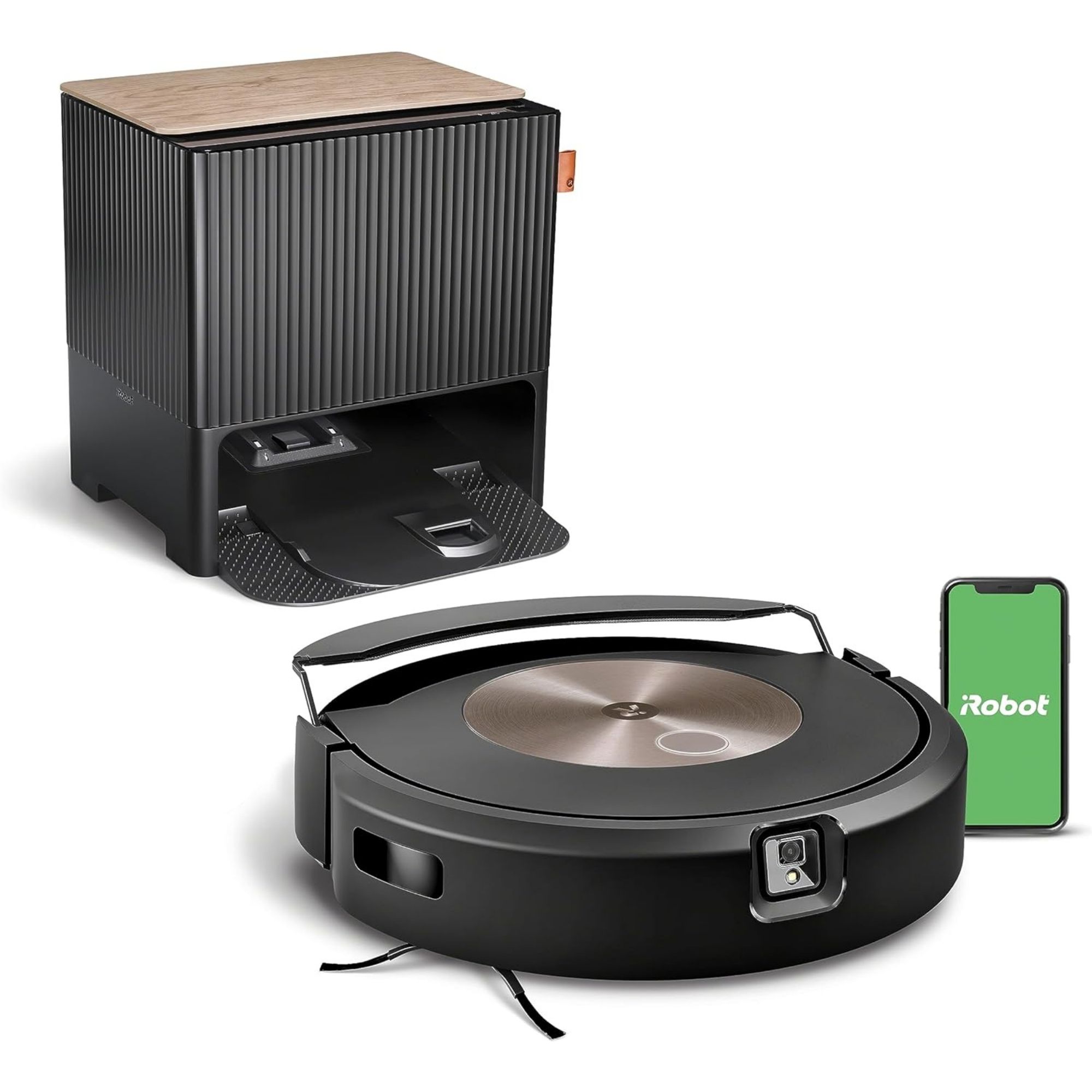
If you're looking for (and willing to spend on) the best you can get, nothing will leave your floors looking as effortlessly clean than the Combo j9+. It's a robot vacuum and robot mop, that requires such little effort from you that you'd be surprised your floors could look like that without doing anything.
Find out more in our iRobot Roomba Combo j9+ review.

Dan is the Home Tech Editor for Homes & Gardens, covering all things cleaning, sound, smart home, and air treatment across the Solved section.
Having worked for Future PLC since July 2023, Dan was previously the Features Editor for Top Ten Reviews and looked after the wide variety of home and outdoor content across the site, but their writing about homes, gardens, tech and products started back in 2021 on brands like BBC Science Focus, YourHomeStyle and Gardens Illustrated.
They have spent more than 400 hours testing and reviewing vacuums, soundbars and air purifiers for Homes & Gardens.
Dan has a BA in Philosophy and an MA in Magazine Journalism. Outside of work, you'll find them at gigs and art galleries, cycling somewhere scenic, or cooking up something good in the kitchen.

